02:36
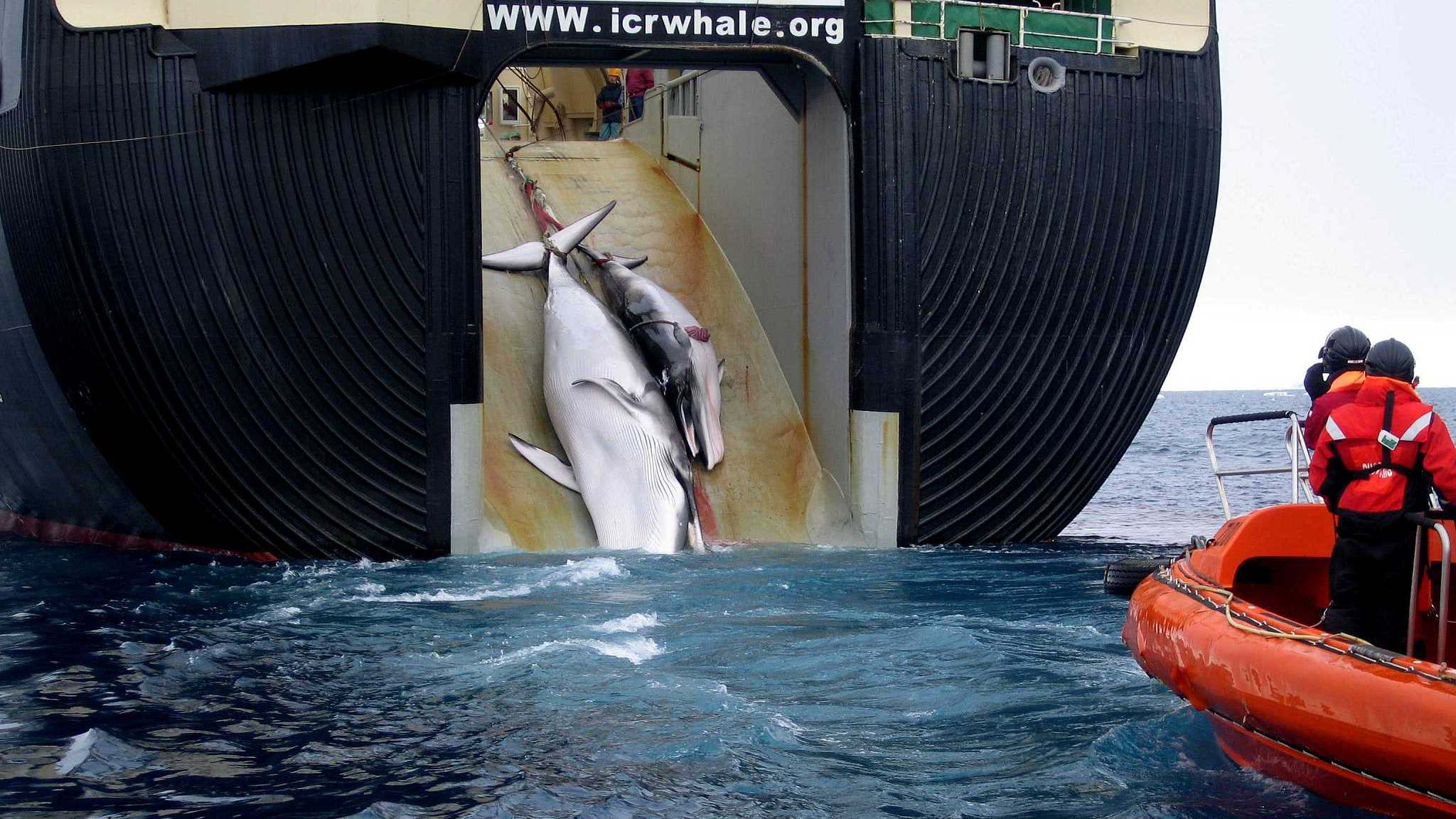
Japan announced Wednesday that it decided to withdraw from the International Whaling Commission (IWC) to
resume commercial whaling for the first time in 30 years, according to government spokesperson Yoshihide Suga.
The spokesperson said commercial whaling would be limited to Japan's territorial waters and its exclusive economic zones along its coasts. Japan plans to hunt whales with sufficient stocks, such as minke whales. Besides, Japan would stop its annual scientific whaling in Antarctica and northwest Pacific oceans.

Japanese Agriculture, Forestry and Fisheries Minister Takamori Yoshikawa meets the press in Tokyo on Dec. 20, 2018, in response to Japan's reported decision to withdraw from the International Whaling Commission in a bid to resume commercial whaling for the first time in about 30 years. /VCG Photo
Japanese Agriculture, Forestry and Fisheries Minister Takamori Yoshikawa meets the press in Tokyo on Dec. 20, 2018, in response to Japan's reported decision to withdraw from the International Whaling Commission in a bid to resume commercial whaling for the first time in about 30 years. /VCG Photo
The decision to leave was made after Japan's request for a resumption of commercial whaling being denied at the IWC meeting in September this year. Japanese government considered that the IWC has become a whale conservation body and abandoned its original purpose of managing whale stocks and promoting the industry.
Japan's withdrawal from the IWC is expected to come into effect on June 30, 2019, though Japan can still participate in IWC's scientific meetings and annual conferences as an observer.
Whale hunting or whale watching?
For centuries, whales are hunted for meat, bones and other substances. However, the modern whaling industry has not formed until the 20th century when the whale hunting methods were substantially improved with the aid of the diesel engine and exploding harpoons.
Due to the massive consumption of whale meat and whale oil, the number of whales dropped dramatically in the 1930s. It is estimated that blue whales have been depleted by up to 90 percent and the population of sperm whales plunged to one-third of their pre-whaling population in the 1940s.
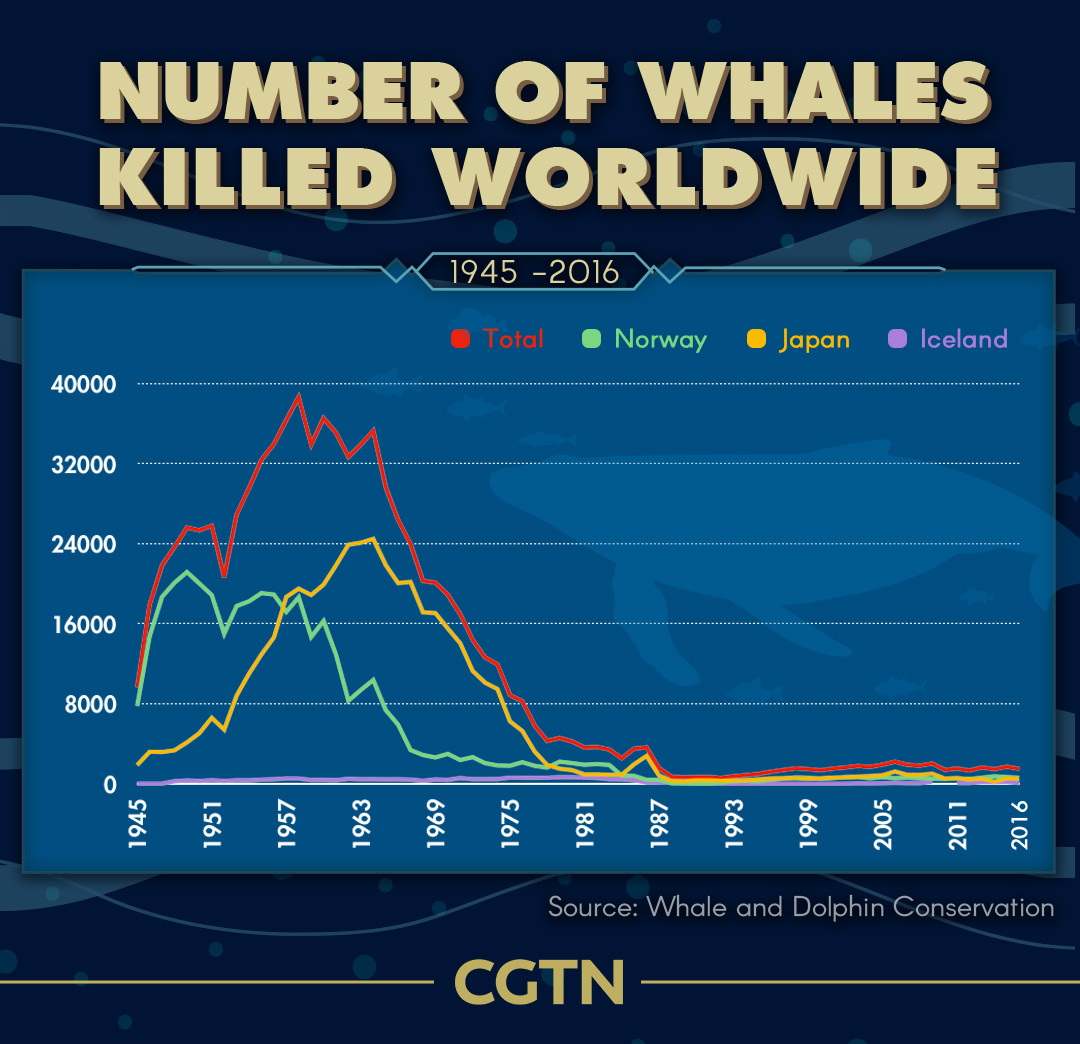
Infographic about the number of whales killed worldwide. /CGTN Photo
Infographic about the number of whales killed worldwide. /CGTN Photo
Therefore, the International Whaling Commission (IWC) was established in 1948 to better preserve the dwindling whale stocks. In 1986, IWC banned the practice of commercial whaling. The populations of many whale species were said to show substantial recoveries afterward, while some remained endangered.
Pro-whaling nations, including Japan, Norway and Iceland believe that the populations of some whale species have recovered enough to be harvested sustainably. They claim that whaling is an integral part of their cultural tradition that should be respected by the international community.
Anti-whaling countries, such as Australia and Brazil oppose whaling for conservation concerns and favor whale watching instead. They advocate the creation of whale sanctuary for endangered marine animals, where commercial whaling is banned. To date, there are the Southern Ocean Whale Sanctuary covering all waters surrounding Antarctica and the Indian Ocean Whale Sanctuary.
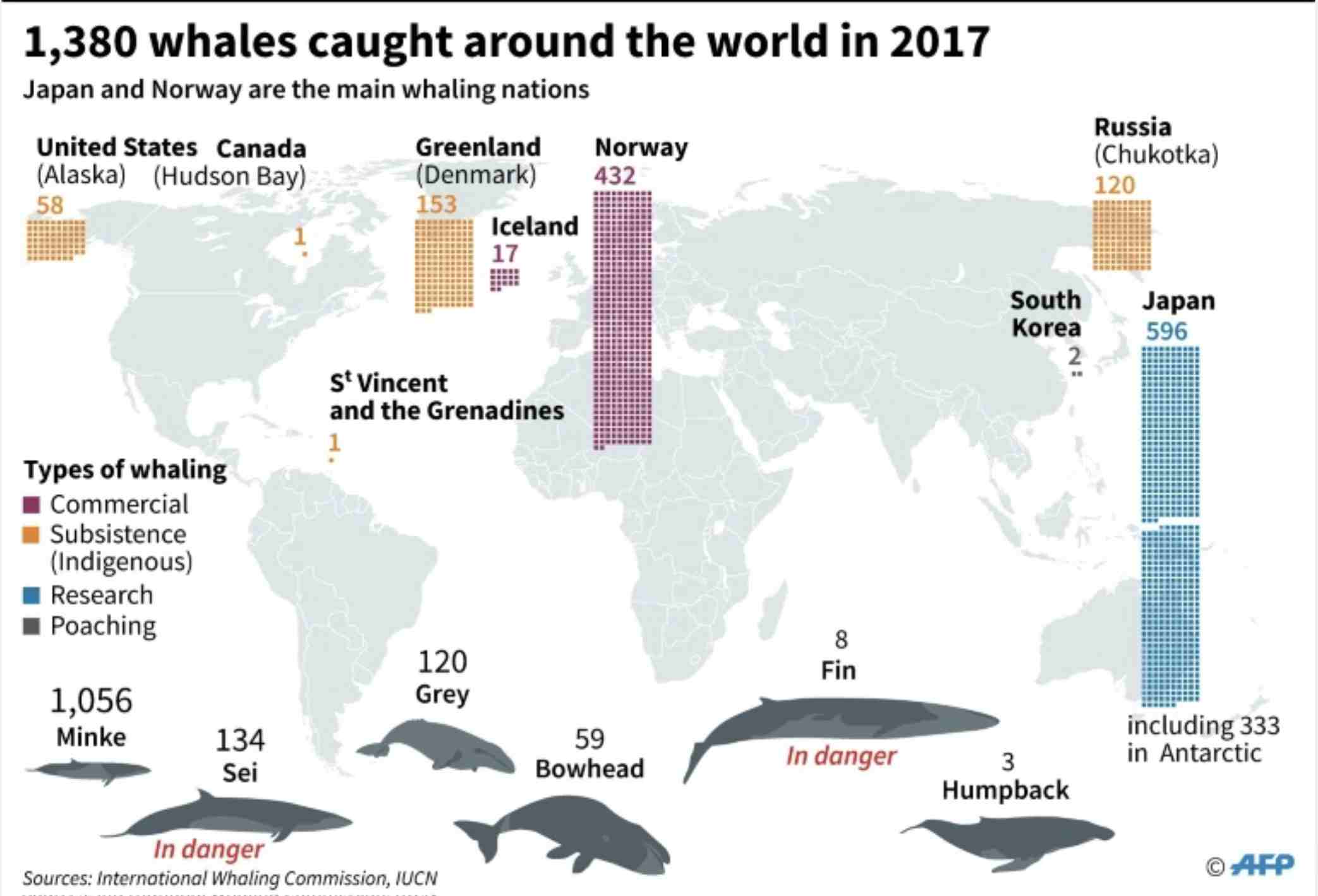
Infographic about whales caught around the world in 2017. /AFP Infographic
Infographic about whales caught around the world in 2017. /AFP Infographic
How scientific whaling differs from commercial whaling?
Whaling is generally divided into three types: aboriginal subsistence whaling, scientific whaling (special permit whaling) and commercial whaling. For the Inuit in Canada and some groups in Indonesia, their traditional whaling methods fall into the first category.
Japan has switched to “scientific whaling” in 1987 after the IWC imposed a moratorium on commercial whaling in 1986. However, hundreds of whales are being culled for research purposes every year.
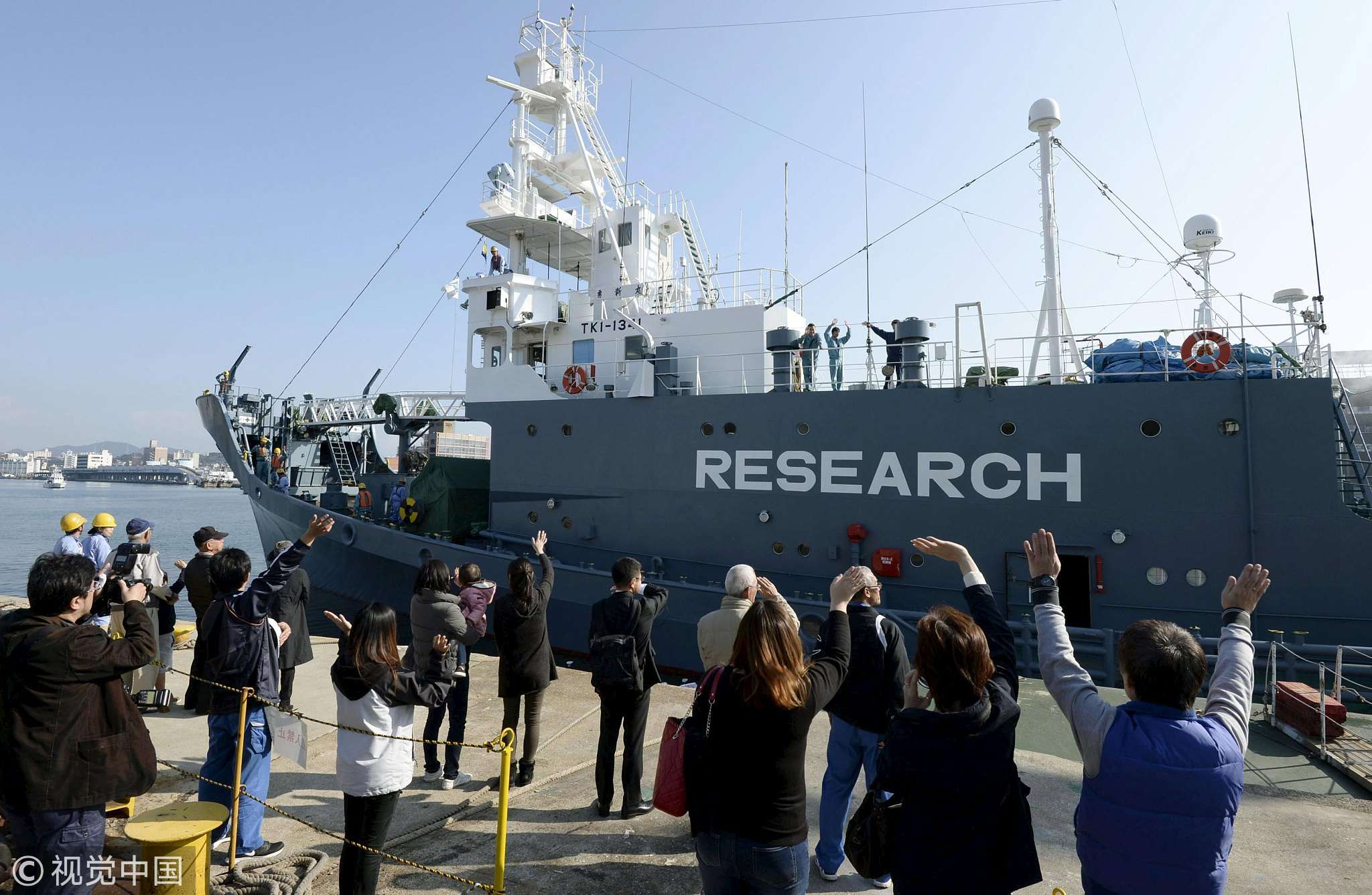
Families of crew members wave as Japanese whaling vessel Yushin Maru leaves for the Antarctic Ocean at a port in Shimonoseki, southwestern Japan, in this photo taken by Kyodo December 1, 2015. /VCG Photo
Families of crew members wave as Japanese whaling vessel Yushin Maru leaves for the Antarctic Ocean at a port in Shimonoseki, southwestern Japan, in this photo taken by Kyodo December 1, 2015. /VCG Photo
Researchers differ on whether killing is necessary for research on whales. Some argue that age information and nutrition condition of whales can only be acquired through lethal sampling methods, while the others think that the age of a whale can be estimated by comparing their body size.
What's more, Japan has been criticized for selling the meat of dead whales to restaurants. Because according to international law, the byproduct of scientific whaling, such as whale meat and whale blubber, are allowed to be sold.
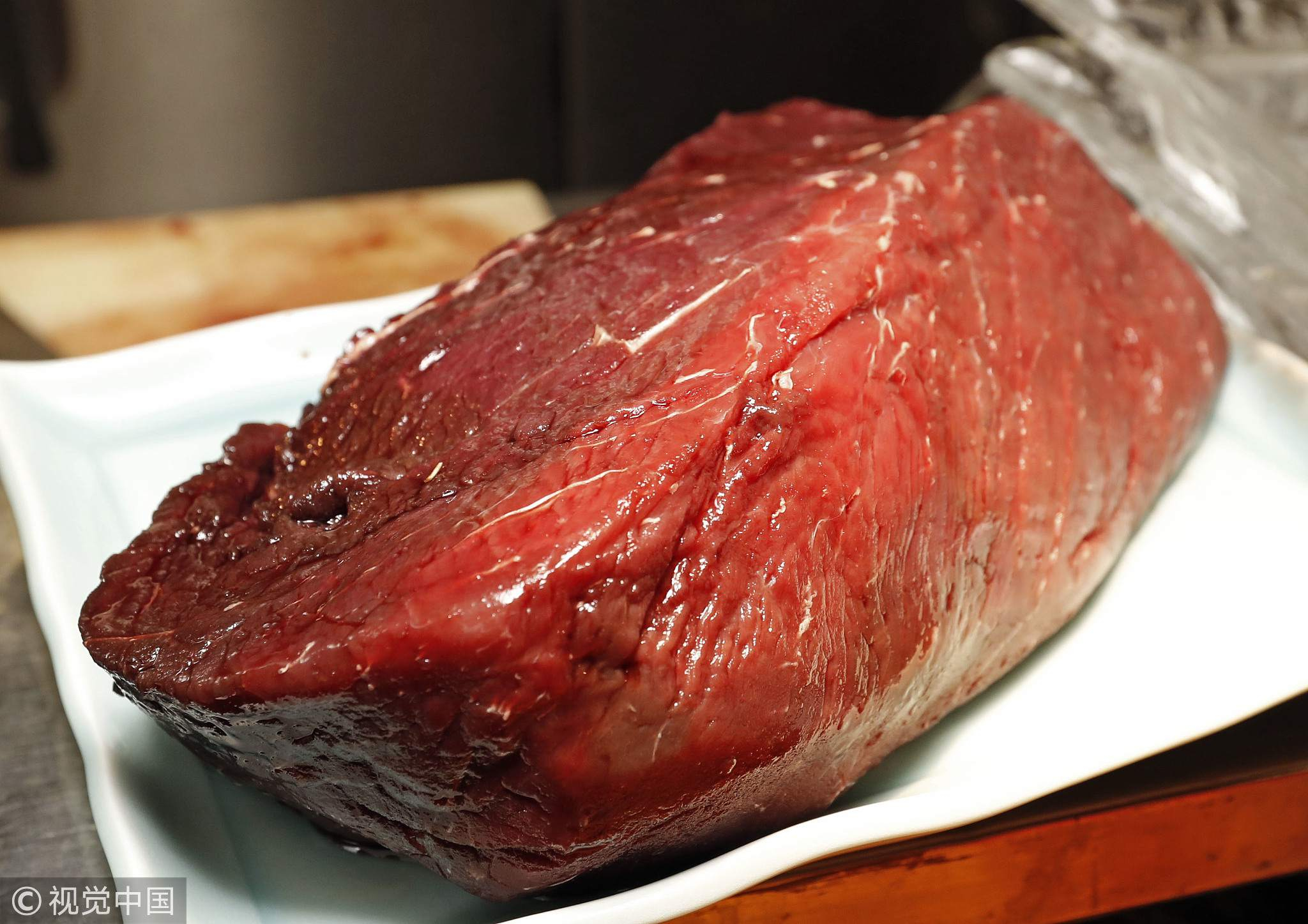
A piece of whale meat at the restaurant in Japan /VCG Photo
A piece of whale meat at the restaurant in Japan /VCG Photo
In 2014, the International Court of Justice temporarily banned Japan from whaling in the Antarctic Ocean, ruling its “scientific program” as commercial practices. After that, Japan reduced its annual quota in the Antarctic by about one third.
According to meeting papers by the IWC's scientific committee, 333 minke whales were killed in Japan's summer hunt earlier this year off the coast of Antarctica. At present, Japan hunts about 600 whales annually in the Antarctic and the Northern Pacific.
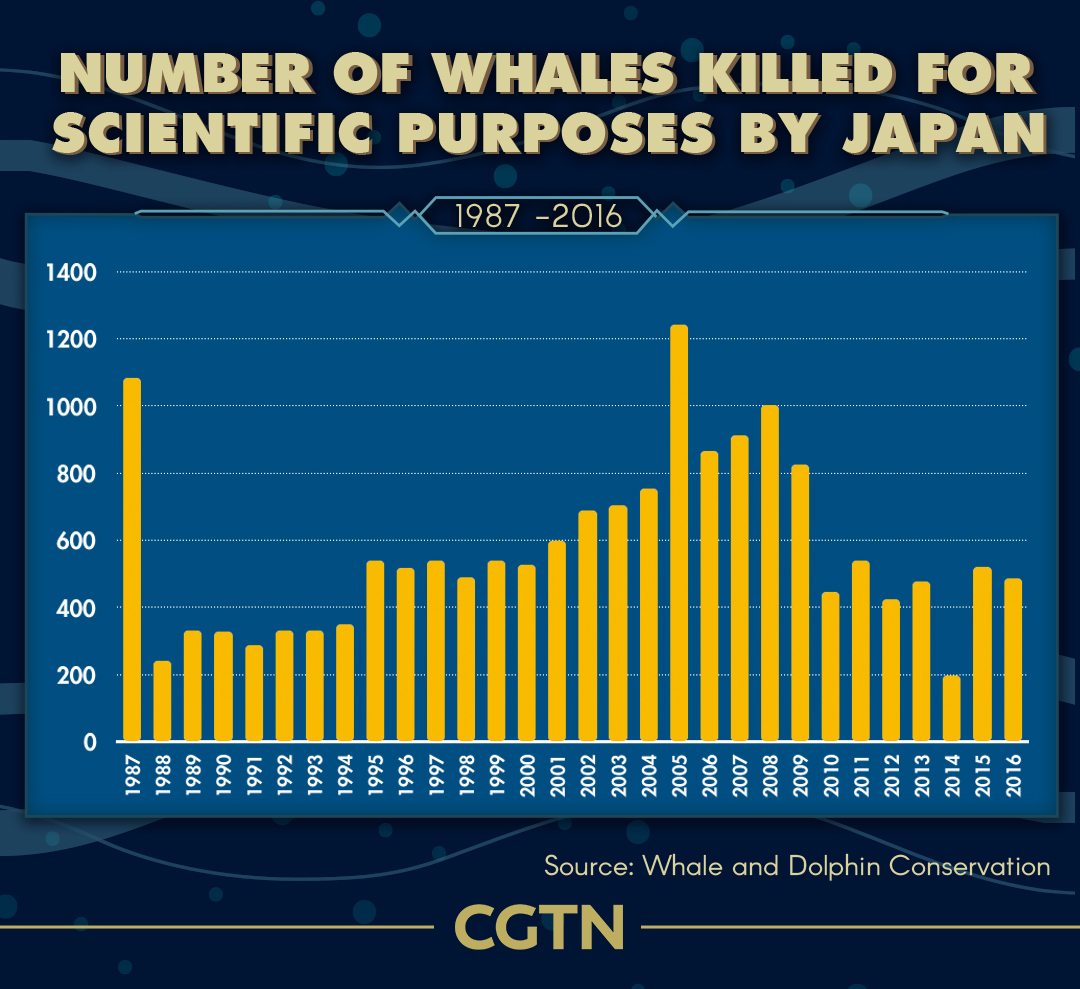
Infographic about the number of whales killed for scientific purposes by Japan. /CGTN Photo
Infographic about the number of whales killed for scientific purposes by Japan. /CGTN Photo
A mixed reaction to whaling in Japan
Back in the 1960s, over 200,000 tons of whale meat was consumed in Japan every year. Now, 3,000 to 5,000 tons of whale meat are consumed annually from scientific whaling, mainly by older Japanese who grew up at the time when whale meat was the primary source of animal protein in Japan.
However, the younger generation may no longer view whales as food and turn to other sources of food items. In 2015, the average consumption of whale meat by the Japanese was just 30 grams per person. According to a Nikkei's story this June, the price of whale meat in Japan has also fallen nearly 40 percent in the last ten years.
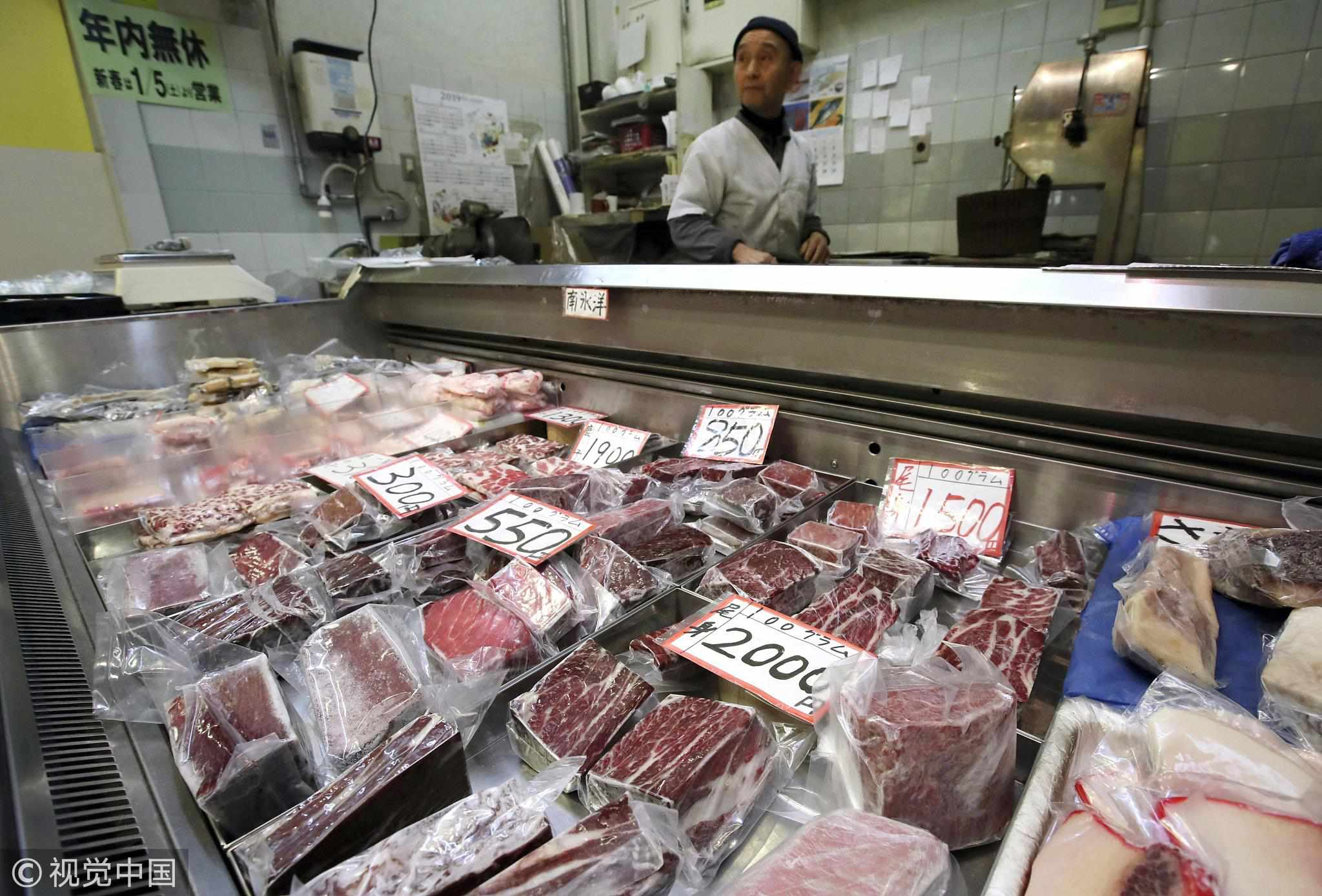
Photo taken on December 26, 2018, shows a retail shop specializing in whale meat in Toyonaka, Osaka Prefecture. /VCG Photo
Photo taken on December 26, 2018, shows a retail shop specializing in whale meat in Toyonaka, Osaka Prefecture. /VCG Photo
It seems that whaling in Japan is not a lucrative business but is in practice rather out of political concerns. Every year, the Japanese government provides large amounts of subsidies to the whaling industry and research programs. The budget for whaling in 2019 is 5.1 billion yen (46 million U.S. dollars).
The ruling Liberal Democratic Party argues that the whaling industry affects over 100,000 people's lives in Japan, especially in its electoral district including the whaling town Taiji, Wakayama. Once whaling is banned, companies would close down and the unemployment rate would surge.
Although Japan is not the first country to withdraw from the IWC, Iceland once left the IWC in 1992 and rejoined in 2004, the political cost of its withdrawal remains high. The resumption of commercial whaling would certainly be opposed by western countries, which might also influence next year's G20 summit held in Osaka.
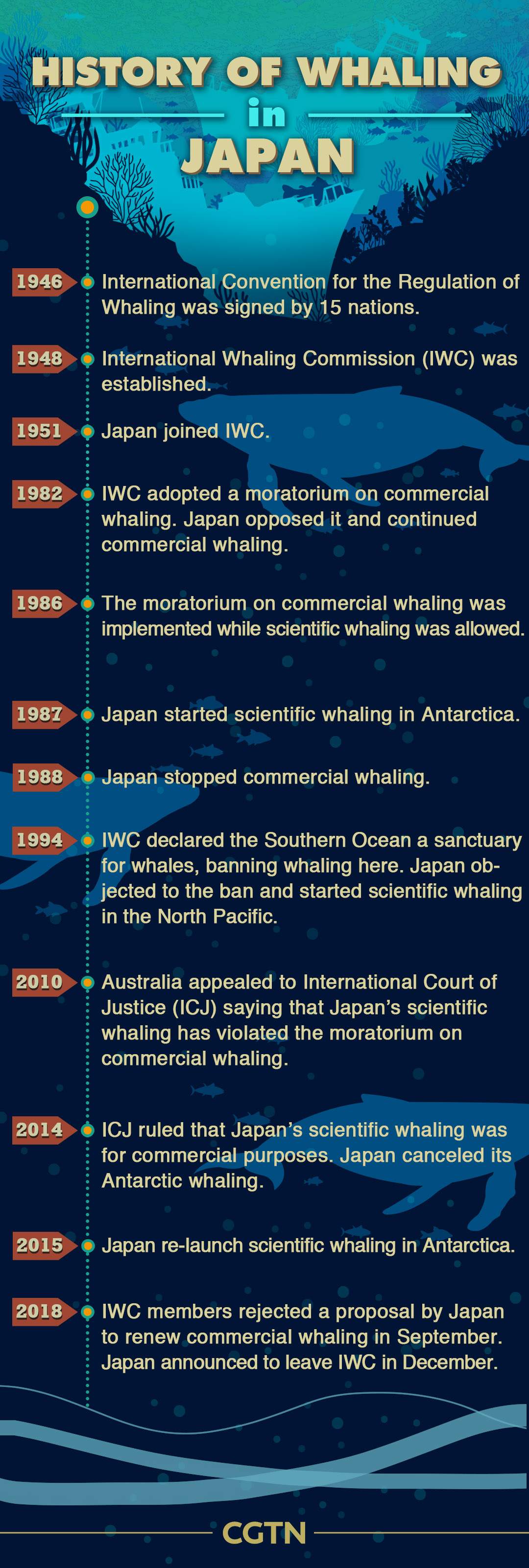
Infographic about the history of whaling in Japan /CGTN Photo
Infographic about the history of whaling in Japan /CGTN Photo










